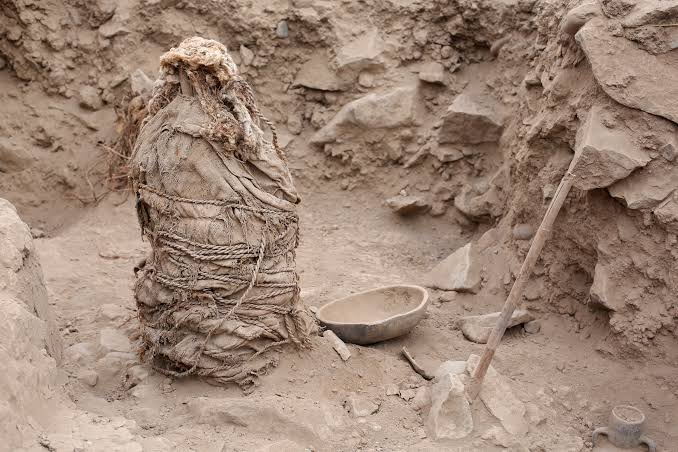Archaeologists in Peru have uncovered the 5,000-year-old remains of a woman believed to have held high social status in the ancient Caral civilisation, providing new insight into the role of women in one of the earliest known urban settlements in the Americas.
The burial was found at Áspero, a sector of the Caral archaeological complex located about 180 kilometres north of Lima. Caral, dating back to approximately 3,000 B.C., is recognised as the oldest known city in the Americas and developed independently of other early civilisations such as those in Egypt, Mesopotamia, and China.
“This is an important burial because it has elements that correspond to a woman of high status,” said archaeologist David Palomino. He noted that the remains were well-preserved, with visible skin, hair, and nails, and that the body had been carefully wrapped.
The woman, estimated to have been between 20 and 35 years old at the time of her death, was buried with a feathered mantle featuring blue and brown plumage, likely from a macaw or another Amazonian bird. Surrounding her tomb were ceremonial items including baskets, gourds, vases, and a toucan’s beak.
Palomino said the discovery highlights the potential importance of women in the Caral civilisation. “This discovery shows that not only men had an important association in this civilisation, but this was also complementary with that of women,” he said.
Caral is often cited as a foundational culture in Andean history. The new finding supports theories that women may have played significant religious or political roles, challenging assumptions that leadership in early civilisations was primarily male-dominated.
Researchers continue to study the site in an effort to better understand the woman’s identity and the cultural practices of the Caral people.
Nzubechukwu Eze.









